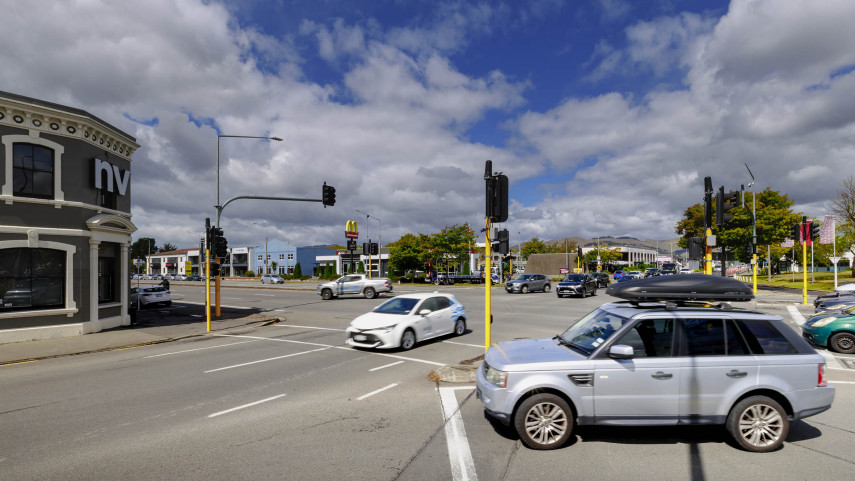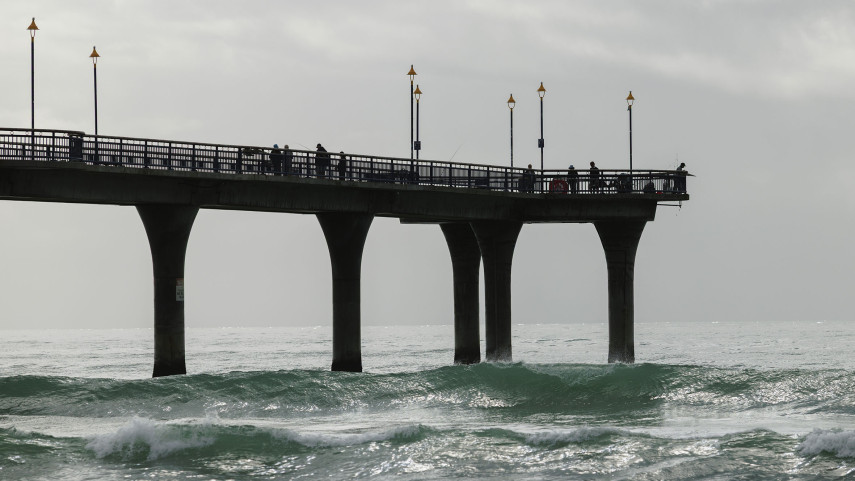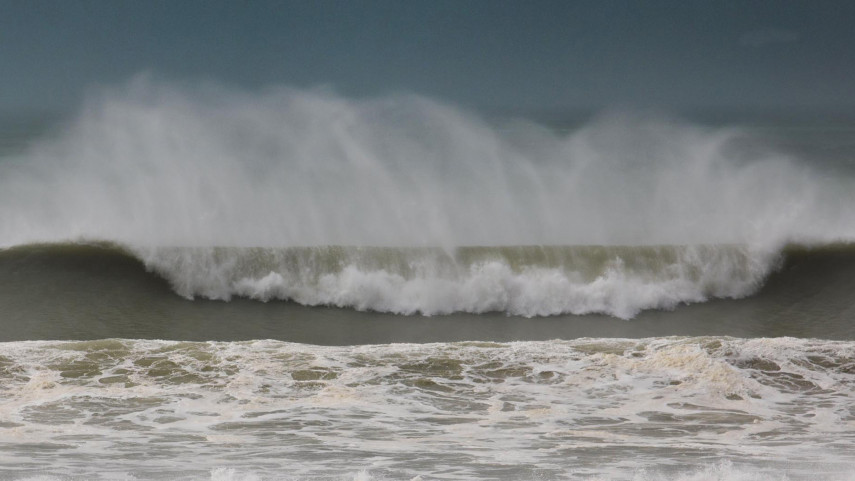Communities in low-lying inland and coastal areas around New Zealand and the world are facing challenges with the impacts of climate change and sea level rise.
Here in Ōtautahi Christchurch and Te Pātaka-o-Rākaihautū Banks Peninsula, the future is expected to bring warmer weather across all four seasons, more days of extreme wind, and more intense rainfalls. Climate change is slowly raising the level of the sea. Water expands with heat, so warmer temperatures are causing our oceans to expand. At the same time, these higher temperatures are melting ice sheets and glaciers adding more water to the oceans.
The result is a rise in sea level that will not only affect the open coast but also allow high tides and the effects of storms to reach further inland. This means that more land may be affected by coastal flooding, erosion and rising groundwater in the future, and the severity of those impacts would likely be greater.
Read more about the main three coastal hazards that are made worse by climate change and sea level rise below, or if you would like a summary, read our coastal hazards fact sheet [PDF, 1 MB].
Coastal flooding (also referred to as coastal inundation) is a natural event that occurs when normally dry, low-lying land is flooded by the sea.
Coastal flooding is primarily caused by severe weather events such as storms where low-pressure weather systems, large waves driven by strong winds, and heavy rain combine to raise water levels. However, rising sea levels can also lead to ‘sunny day flooding’ (where high tides cause flooding even without a storm).
The worst flooding occurs when larger-than-normal high tides and storms occur at the same time.

A conceptual model for calculating extreme static water levels for coastal flooding analysis.
As the level of the sea rises, land that currently floods during storms or extreme high tides may experience more frequent and deeper flooding. Slightly higher areas or low-lying areas further inland may also begin to flood over time.
In the Christchurch District, there are some differences in how floods happen along different parts of the coast.
Areas most at risk of coastal flooding are low-lying areas in the east of the city close to the Ihutai Estuary, Brooklands Lagoon and the lower reaches of the Ōtakaro Avon and Ōpāwaho Heathcote rivers, as well as low-lying land around harbours, bays and coastal lakes in Te Pātaka o Rākaihautū Banks Peninsula.
Coastal erosion is a natural and ongoing process that occurs when the sea wears away the land. Some coastal areas undergo short-term periods of erosion but then recover (i.e. build out again) while others continuously erode with no cycle of recovery.
The rate of erosion depends on the:
- Ocean conditions such as waves, tides, storm surge and currents.
- Climate variability such as predictable climate cycles and long-term climate change.
- Sediment budget which explains the rate at which sediments come and go from the coast, and whether this is balanced.
- Vertical land movement.
- Sea level rise (SLR).
Over years and decades, depending on the balance of short-term erosion events and recovery periods, some coastlines grow out towards the sea (accrete), some stay in about the same place (equilibrium) and some retreat landward (erode).
As sea levels rise, erosion episodes will increase in severity and frequency as storms occur on higher water levels. It is also expected that recovery periods between erosion events will shorten.
This means that eroding coastlines will erode faster or have larger individual erosion events, and accreting coastlines could grow seawards more slowly, stop accreting, or even become eroding coastlines.
Even a shoreline that is accreting in the long-term can experience erosion events, which could cause damage to nearby property, infrastructure and activities.

Conceptual model for Areas Susceptible to Coastal Erosions (ASCE) on a sand beach shoreline, showing the components contributing to erosion for the current day (top figure) and in the future (bottom figure).
Coastal erosion and accretion happen differently along different parts of the coast due to the varied shoreline types and coastal processes.
Christchurch's open coast from the Waimakariri River through to Southshore is a dynamic sand beach and dune environment which is constantly changing in beach elevation and volume due to variations in water levels and waves.
It is currently in a cycle of long-term accretion because of the continued sand supply from the Waimakariri River. However, the risk of dune erosion is still present from storm events. If sea-level rise exceeds about 40 to 60cm over the next 50 years, then a switch to a long-term trend of erosion is more likely than continued accretion.
Enclosed coastal waters, such as those within the Ihutai Estuary or Lyttelton and Akaroa Harbours, are low-energy environments which change much more slowly. However, softer sediments and steeper slopes and banks of the shoreline mean they are also less able to recover once eroded.
The coastal cliffs and steep rocky coastlines around Christchurch and Banks Peninsula are typically made of harder volcanic rock so are less likely to erode, but more frequent higher water levels attacking the toe of the cliffs could worsen existing slope instability of the softer upper cliff sediments, and if these areas do erode, they are unable to naturally build back.
Groundwater describes water that exists in saturated zones beneath the land surface.

A conceptual model for identifying low-lying coastal areas which might be impacted by rising groundwater.
Near open water sources such as rivers, estuaries and the sea, groundwater connects to the surface water. This results in groundwater that is often much shallower in low-lying areas near these open water sources.
Groundwater doesn’t stay fixed at the same height all the time, it naturally fluctuates between days, weeks, seasons and years, alongside changes in surface water such as tidal cycles. Due to this connectivity, sea level rise as a result of climate change is expected to lead to rising groundwater in coastal areas, causing wet ground or above-ground flooding in areas where the groundwater is already close to the surface.
These effects may only last for a short time and then drop away again, but over time they may remain for longer (days to months). Changing weather patterns as a result of climate change may also result in less frequent but more intense heavy rainfall, which soaks into the ground, saturates it and temporarily brings the groundwater closer to the surface.
The Council started measuring ground levels after the 2010/2011 Canterbury Earthquake Sequence in areas where ground levels dropped as a result of the events. This lowering of ground levels is called subsidence.
While groundwater levels are not significantly affected by this, the groundwater will be slightly closer to the ground. In order to provide long-term predictions on this phenomenon, more data is required. At this stage, no predictions can be made on future land subsidence in Christchurch.
In general, areas most at risk from a rise in groundwater due to sea level rise are similar to the low-lying areas at risk of coastal flooding. High groundwater tables also exist in other parts of the Christchurch District, further inland from the coast, but groundwater in these areas is not expected to be significantly impacted by sea level rise.
Away from the coast and tidal rivers (such as the Ōtakaro Avon and Ōpāwaho Heathcote rivers), shallow groundwater levels are not strongly affected by changing sea levels. This means that the risk of rising groundwater caused by sea level rise is most significant in coastal areas and those close to waterways.
Tsunami
Tsunami describe a sustained elevated sea level caused by underwater earthquakes, landslides or volcanoes that can flood coastal areas if they reach land.
A tsunami large enough to cause flooding of land in Ōtautahi Christchurch is most likely to come from a distance source, for example, an earthquake off the coast of South America.
This is because a distant source tsunami could travel directly towards our coast, as opposed to the oblique angle that would be created by a regional source, such as, for example, an earthquake in Kaikoura.
Changes in long term sea level will not affect the likelihood of a tsunami occurring. However, increases in the water level that the tsunami is superimposed on could mean the impacts of a tsunami, (even smaller, more likely tsunamis) will be greater in the future.
See how tsunami risk is currently identified and managed through evacuation zones and warning systems.
River and rainfall flooding
Coastal flooding is one type of flooding that Ōtautahi Christchurch and Te Pātaka o Rākaihautū Banks Peninsula settlements are susceptible to.
Other types of flooding include:
- Fluvial flooding: This occurs when streams and rivers are at full and water flows over the banks.
- Pluvial flooding: This occurs when the stormwater drainage system cannot cope with extremely heavy rain.
More information on how flood risk is identified and managed(external link).
Liquefaction
Liquefaction is a natural process where earthquake shaking increases the water pressure in the ground causing some soils to behave like a fluid, resulting in temporary loss of soil strength.
More information on how liquefaction risk is identified and managed.(external link)
Slope instability
For coastal areas in the Port Hills and Banks Peninsula, slope stability hazards can also be present(external link).
The first step in adapting to coastal hazards is understanding the risks.
We have updated our coastal hazard assessment for the entire Christchurch District. This assessment was completed by Tonkin + Taylor and has been independently peer-reviewed by Jacobs. We have also involved representatives from community groups with interests in technical hazard information and/or environmental issues in helping to develop the assessment’s communications and supporting information.
You can find out more about the 2021 Coastal Hazard Assessment, how coastal hazards may impact us and other technical information, below.




